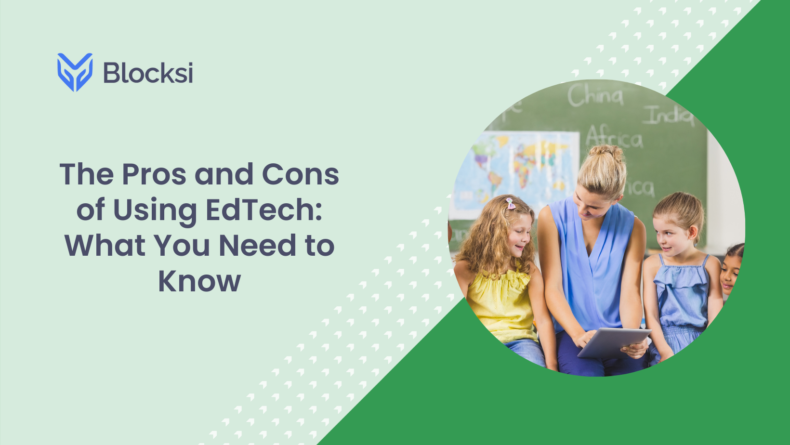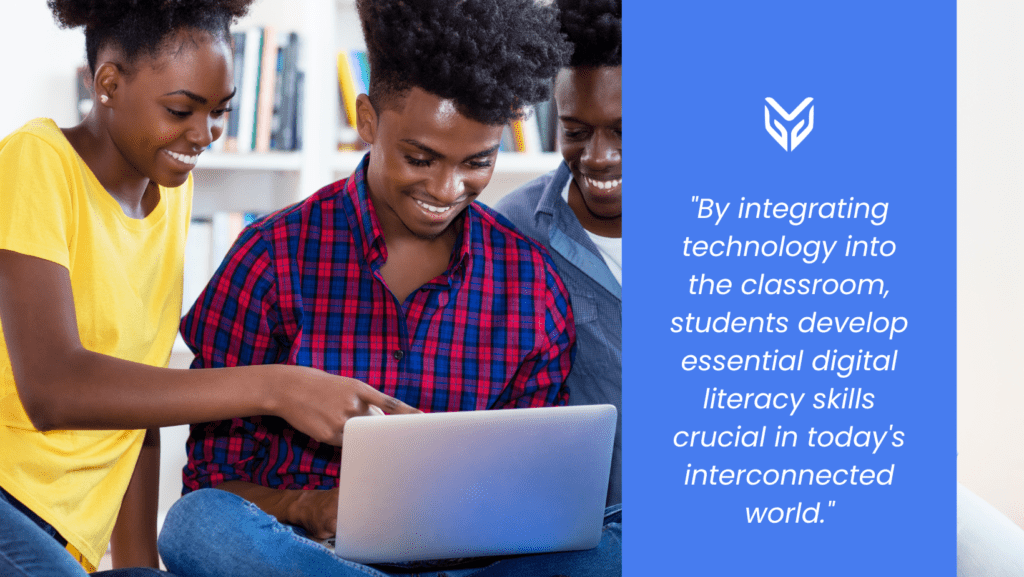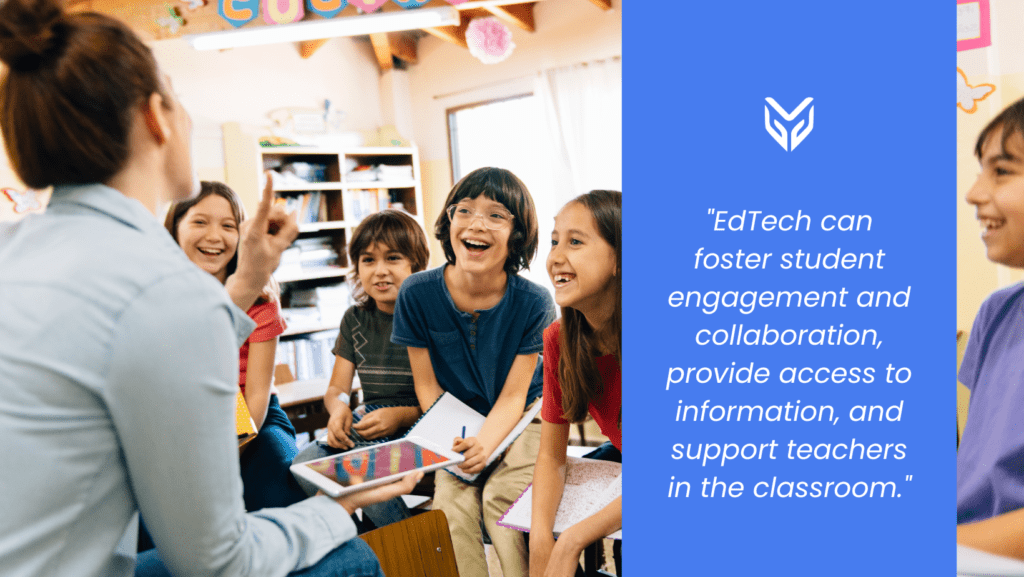NEWS
The Pros and Cons of Using EdTech: What You Need to Know

The use of technology in the classroom or educational technology (EdTech) can be a controversial topic. And in the ever-evolving educational landscape, it sparks contentious debates among educators, parents, and experts alike. Some believe that it is a necessary tool that should be used to supplement traditional teaching methods. Others believe it is a distracting force that does more harm than good.
So, what is the truth? Is technology a help or a hindrance to learning in the classroom? This article will explore the pros and cons of using EdTech. By the end, you will better understand where technology belongs in the classroom – and how you can use it to benefit your K-12 students.
Pro #1: Enhanced Engagement and Interactivity
Technology captivates students by arousing their curiosity and providing an engaging learning atmosphere that fully absorbs them. Interactive educational tools, such as multimedia presentations, virtual simulations, and educational applications enable students to actively participate in the learning process, fostering engagement and knowledge retention.
Con #1: Distractions and Loss of Focus
One of the primary concerns surrounding EdTech is the potential for distractions. With access to the internet, students may succumb to the allure of entertainment or non-educational content, diverting their attention from learning. You can tackle this by using school web filtering. Picking an efficient tool will empower you to control what students can or cannot do during lessons.
Pro #2: Personalized Learning
Technology empowers educators to cater to the diverse learning needs of their students. Adaptive learning platforms can assess individual strengths and weaknesses, tailoring educational content to suit each student’s pace and learning style. This personalized approach maximizes comprehension and ensures that no student is left behind.

And this is also where additional classroom management tools come in handy. Using classroom monitoring, you can stay on top of students’ activities and use EdTech as a way of giving instruction and bettering the learning experience.
Con #2: Dependence on Technology
Relying too heavily on technology can potentially impede the progress of essential abilities like handwriting, mental math, and critical thinking. Without technological aids, students may struggle to adapt and perform optimally, thus compromising their overall learning potential. That is why technology in the classroom must not completely overtake learning but instead complement and improve it.
Pro #3: Access to a Wealth of Information
The internet is an unparalleled knowledge repository, granting students instant access to vast information. With EdTech, students can conduct research, explore various perspectives, and delve deeper into subject matters, cultivating critical thinking and self-directed learning skills.

Con #3: Limited Social Interaction
The increased use of EdTech may impede face-to-face social interactions. Physical classroom interactions foster interpersonal skills, empathy, and emotional intelligence. By reducing personal interactions, technology can inadvertently hinder the development of these essential aspects of social growth.
Pro #4:Collaboration and Communication
At the same time, EdTech can be a useful tool for upgrading students’ communication skills by offering group chats, easier communication methods, etc. Technology facilitates seamless student collaboration and communication, transcending physical boundaries. Online platforms, discussion boards, and video conferencing tools allow students to exchange ideas, engage in group projects, and communicate with peers and experts worldwide. These collaborative endeavors nurture teamwork, cultural awareness, and effective communication skills.
Con #4: Cybersecurity and Privacy Concerns
The digital landscape presents potential risks in terms of cybersecurity and privacy. Schools must implement robust security measures to safeguard students’ personal information and ensure a safe online environment. Without adequate precautions, students may be exposed to cyber threats or fall victim to unauthorized data breaches. But this can be tackled, and this is also where the need for efficient school web filtering resurges again.
Pro #5: Preparation for the Digital Age
By integrating technology into the classroom, students develop essential digital literacy skills crucial in today’s interconnected world. They gain proficiency in utilizing productivity tools, navigating digital resources, and comprehending online etiquette. Equipping students with these skills prepares them for future academic and professional pursuits.

Con #5: Equity and Accessibility Issues
Despite the potential for enhanced accessibility, the digital divide remains a concern. Students from disadvantaged backgrounds may lack access to necessary technology or stable internet connections, further exacerbating educational inequalities and creating a “digital divide” between different socioeconomic groups.
But, according to The Journal, this is becoming a problem of the past because an overwhelming majority (94%) of K-12 public schools provide digital devices, such as laptops or tablets, to students who need them.
How to Make Sure You Use EdTech to Its Highest Potential – And Safely?
As a teacher, you are essential in ensuring students use EdTech safely. Here are some helpful tips on how to ensure safety when using it:
- Monitor students’ EdTech usage: Monitor students’ usage and make sure they are using the technology safely. You can do this efficiently and from every classroom corner by using classroom management software, such as Blocksi.
- Talk about safety: Educate students about safety and the potential risks of using technology. Explain the importance of privacy and how to protect their information. Besides doing this, you can foster a safe online presence using content filtering that protects students from harmful content.
- Involve parents: Keep parents informed and involved in the classroom’s technology usage. Make sure they know what technology is being used in the classroom and how it’s being used. Again, with Blocksi, you can include parents in choosing what students can access on their school devices, even after school hours.
To Sum It All Up …
Technology can be a powerful tool in the classroom when used appropriately and responsibly. EdTech can foster student engagement and collaboration, provide access to information, and support teachers in the classroom.

However, with its benefits come risks of misuse and abuse. As teachers, it is also your responsibility to ensure that students use EdTech safely and appropriately and to help students develop positive habits when using it. To learn more about efficient classroom monitoring and ensuring students’ online activities are safe, click the button below and book a meeting to find out more.
SOURCES
[1] How Edtech is Transforming the Classroom?





